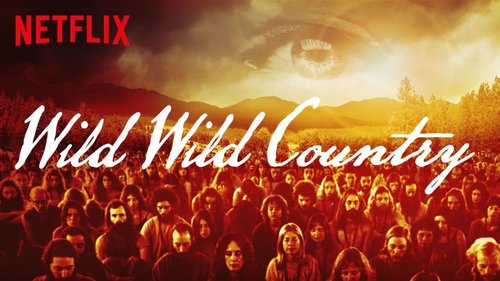
Author: Adam Pawling
Justice Louis Brandeis once said that one of the most cherished rights is the right to be left alone. In the new Netflix documentary series Wild Wild Country, we learn of two groups in Oregon who had hoped for just that.
Screened at Sundance and directed by brothers Chapman and Maclain Way, they tell the mesmerizing story of the encounter between farmers and New Age Indian teacher Bhagwan Shree Rajneesh.
In 1981 he arranged to buy a 64,000-acre property called Big Muddy Ranch in Central Oregon. His goal: to pioneer a modern way of spiritual living for his followers. All the essential ingredients for contemporary worship were in play, including identical red outfits, chanting, meditation, self-sufficiency, psychotherapy, and, let’s not forget, public nudity and lots of free sex.
Bizarre and cultish, perhaps, but not lazy or disorganized. Within three years, the Rajneeshees had transformed the empty wasteland of Big Muddy into a New Age City, Rajneeshpuram. They grew to 7,000 residents and developed all the accouterments essential to urban development.
Nestled in this commune were running electricity and water, medical services, fire and police departments, restaurants, houses, and a public transportation system. They even earned their zip code, 97741. Oh, and an airport, they also had their airport.
Less than three years after the Jonestown massacre, when expressions like “drinking the Kool-Aid” and “suicide cult” were making their way into everyday language, the eccentric red-garbed Rajneeshees were arriving en masse, traveling through the only local settlement near Big Muddy Ranch; Antelope, Oregon, a quaint town of 40. Needless to say, they weren’t as welcoming to their new free-spirited neighbors.
As the feature unfolds, the questionable practices of the Rajneesh followers attracted backlash from Oregon residents. Audiences learn that Oregonians worked with environmental groups, forming coalitions to battle the developing community. As the land had only been zoned for agricultural use, the growth of a functioning municipal meant illegal construction.
The land-use conflict escalated to bitter hostility between the two groups, which boiled into a “truth is stranger than fiction” drama. Viewers are encapsulated with scenes of wiretapping, hotel bombings, para-military forces, attempted assassinations, bioterrorism, beavers (you’ll see), federal investigations, arson, and INTERPOL.
The story is so strange, with surreal twists and turns, that it keeps you glued to the screen for six hours. Still, despite the sensational expose, the Way brothers present the material un-rushed, with a thoughtful conversation about what happened and why from all sides.
In the end, what everyone wanted, feared losing, and fought so hard for, was autonomy. On the one hand, you have a small group of ranchers and retirees who want a quiet life. Conversely, a young, unconventional, and sexually adventurous New Age religion wanted a utopia in the wilderness.
I can’t help but feel that with a little more wisdom and patience on both sides, there could have been room for everyone. Watch Wild Wild Country, currently streaming on Netflix, and see if you agree.
